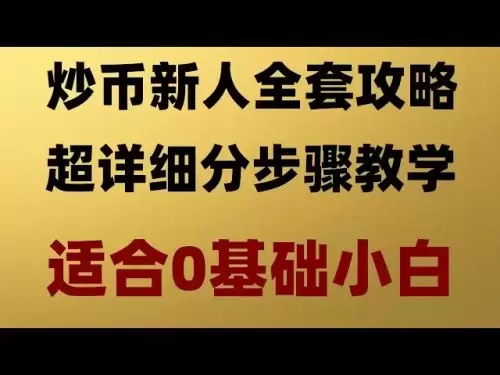-
 Bitcoin
Bitcoin $106,211.1658
0.62% -
 Ethereum
Ethereum $2,572.0517
1.54% -
 Tether USDt
Tether USDt $1.0002
-0.03% -
 XRP
XRP $2.1830
1.20% -
 BNB
BNB $652.5726
0.56% -
 Solana
Solana $156.6468
7.35% -
 USDC
USDC $0.9999
0.00% -
 Dogecoin
Dogecoin $0.1770
-0.56% -
 TRON
TRON $0.2715
0.13% -
 Cardano
Cardano $0.6403
1.72% -
 Hyperliquid
Hyperliquid $42.5647
6.09% -
 Sui
Sui $3.0838
2.97% -
 Bitcoin Cash
Bitcoin Cash $457.5387
4.49% -
 Chainlink
Chainlink $13.4460
1.39% -
 UNUS SED LEO
UNUS SED LEO $9.2625
0.15% -
 Avalanche
Avalanche $19.4071
1.98% -
 Stellar
Stellar $0.2606
0.98% -
 Toncoin
Toncoin $3.0013
1.10% -
 Shiba Inu
Shiba Inu $0.0...01214
0.29% -
 Hedera
Hedera $0.1564
1.48% -
 Litecoin
Litecoin $86.9375
1.08% -
 Polkadot
Polkadot $3.8613
1.79% -
 Ethena USDe
Ethena USDe $0.9998
-0.06% -
 Monero
Monero $316.5122
0.32% -
 Dai
Dai $0.9999
-0.01% -
 Bitget Token
Bitget Token $4.5634
0.87% -
 Pepe
Pepe $0.0...01129
1.55% -
 Uniswap
Uniswap $7.4180
1.07% -
 Pi
Pi $0.6028
-2.22% -
 Aave
Aave $279.1694
1.03%
What does it mean when the volume fluctuates during the sideways trading at high levels?
Volume fluctuations during sideways trading signal shifting market sentiment, offering clues about potential breakouts or reversals.
Jun 15, 2025 at 10:28 am

Understanding Volume Fluctuations in Sideways Trading
When volume fluctuates during sideways trading at high levels, it refers to the changes in the number of assets traded over a given period while the price remains relatively stable, moving within a defined range. This phenomenon typically occurs when the market lacks a clear directional bias—neither bullish nor bearish momentum is strong enough to push prices significantly higher or lower.
In such scenarios, traders and investors closely monitor volume patterns because they can provide insights into potential breakouts or breakdowns. A rising volume may indicate growing interest, while declining volume might suggest apathy or consolidation.
Key Takeaway: Volume fluctuations during sideways movement reflect shifts in market sentiment even when prices remain stagnant.
What Happens When Volume Rises During High-Level Consolidation?
A rise in volume during sideways trading at high levels often signals that something significant could be brewing behind the scenes. Institutional players may be accumulating or distributing large positions, which can create increased transaction activity without necessarily moving the price.
This kind of volume increase is usually accompanied by tightening spreads and reduced volatility, suggesting that although more shares or tokens are changing hands, the market participants are still undecided on the next major direction.
- Accumulation phase: Smart money buys while the public hesitates.
- Distribution phase: Large holders begin selling to retail buyers.
- Market indecision: No dominant trend emerges despite high participation.
Important Note: High volume without price movement suggests preparation for a breakout rather than immediate action.
Why Does Volume Drop During Extended Sideways Movement?
Conversely, a drop in volume during prolonged sideways trading indicates waning interest. Traders lose enthusiasm as the asset fails to break out of its range, leading to reduced participation. This is especially true if the sideways pattern has lasted for weeks or months with no significant news catalyst.
During these phases, price becomes range-bound, and traders who rely on momentum or trends step aside, waiting for clearer signals. The result is thin order books and wider bid-ask spreads, increasing the risk of sudden spikes or gaps when a breakout finally occurs.
- Lack of catalysts: No major news or events drive new interest.
- Traders move to other opportunities: Capital flows to more volatile or trending markets.
- Institutional positioning completes: Big players have finished buying or selling.
Critical Insight: Low volume in a sideways market can precede either a false breakout or a sharp reversal.
How to Interpret Volume Patterns in Cryptocurrency Markets
In cryptocurrency trading, volume is considered one of the most reliable indicators due to the asset class's inherent volatility and sensitivity to sentiment. Unlike traditional markets, crypto markets operate 24/7, making volume analysis even more critical.
When analyzing volume during sideways movement in crypto, consider the following:
- Check exchange-specific data: Some exchanges report inflated volumes, so use trusted platforms like CoinGecko or CoinMarketCap for confirmation.
- Compare volume against historical averages: Significant deviations may signal accumulation or distribution.
- Overlay volume with technical indicators: Tools like On-Balance Volume (OBV) or Volume Weighted Average Price (VWAP) can add context.
Practical Tip: Always cross-reference volume data with order book depth and open interest, especially for futures markets.
What Are the Implications for Traders and Investors?
For active traders, fluctuating volume during sideways movement at high levels presents both challenges and opportunities. It tests patience but also offers a chance to position ahead of potential breakouts.
Passive investors should view this phase as a time to reassess fundamentals and ensure their entry points align with long-term goals rather than short-term noise.
- Use tight stop-losses: To protect against false breakouts or whipsaws.
- Avoid chasing entries: Wait for confirmation before committing capital.
- Monitor macro developments: Crypto is highly correlated with global financial markets and regulatory updates.
Strategic Reminder: High-level consolidation doesn’t guarantee continuation—it may just as easily lead to reversal.
Frequently Asked Questions
Q1: Can volume alone confirm a breakout from a sideways pattern?
No single indicator, including volume, can definitively confirm a breakout. However, a surge in volume accompanying a breakout increases the likelihood that the move is legitimate and sustainable.
Q2: Should I trade during low-volume sideways movement?
It’s generally safer to avoid aggressive trading during low-volume consolidation unless you're using range-bound strategies like selling options or arbitrage between spot and futures markets.
Q3: How do I differentiate between accumulation and distribution during sideways movement?
Look at the behavior of volume relative to minor price swings. Accumulation often shows higher volume on bounces, while distribution shows higher volume on dips.
Q4: What tools help analyze volume during sideways trading?
Popular tools include OBV (On-Balance Volume), VWAP (Volume Weighted Average Price), and volume histograms. Combining these with candlestick patterns enhances accuracy.
Disclaimer:info@kdj.com
The information provided is not trading advice. kdj.com does not assume any responsibility for any investments made based on the information provided in this article. Cryptocurrencies are highly volatile and it is highly recommended that you invest with caution after thorough research!
If you believe that the content used on this website infringes your copyright, please contact us immediately (info@kdj.com) and we will delete it promptly.
- BlackRock Bitcoin ETF Takes Charge With Nearly $1B Inflows; Details
- 2025-06-16 13:05:12
- Trump's Trade Agenda Continues to Shock Global Financial Markets, Prompting a Revaluation of Bitcoin (BTC) and Equities
- 2025-06-16 13:05:12
- The Naira Depreciated by 0.12% Against the US Dollar at the Nigerian Autonomous Foreign Exchange Market (NAFEX) on Monday, April 28
- 2025-06-16 13:00:13
- Norfolk man finds fully intact Second World War gas mask while looking for driftwood
- 2025-06-16 13:00:13
- Howard Lutnick Reveals How the United States Aims to Support Bitcoin Mining Operations
- 2025-06-16 12:55:18
- DeepBook (DEEP) Price Surges 120% in a Month, Targeting New All-Time Highs
- 2025-06-16 12:55:18
Related knowledge
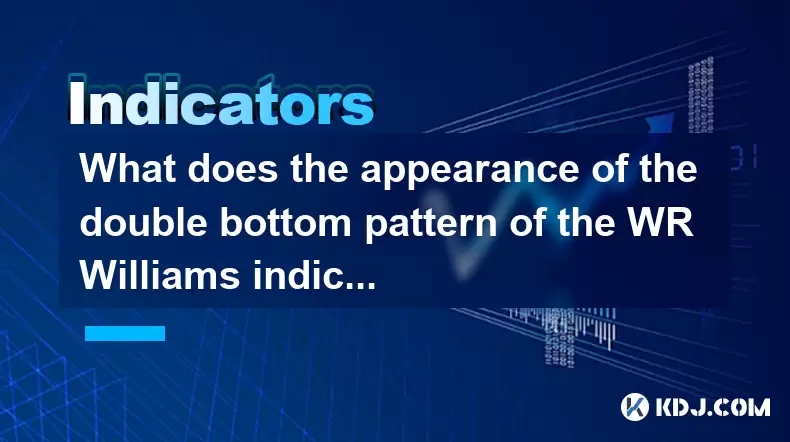
What does the appearance of the double bottom pattern of the WR Williams indicator mean? Can I buy the bottom?
Jun 16,2025 at 01:01pm
Understanding the WR Williams IndicatorThe WR (Williams %R) is a momentum oscillator used in technical analysis to identify overbought and oversold levels in trading. Developed by Larry Williams, this indicator oscillates between 0 and -100. A reading above -20 typically indicates overbought conditions, while a reading below -80 signals oversold territo...

What does it mean when the trading volume is enlarged but the K-line body is very small?
Jun 16,2025 at 11:42am
Understanding the Basics of K-line and Trading VolumeIn cryptocurrency trading, K-line charts, also known as candlestick charts, are essential tools for analyzing price movements. Each K-line represents a specific time period and shows four key data points: open, high, low, and close. The body of the K-line reflects the difference between the opening an...
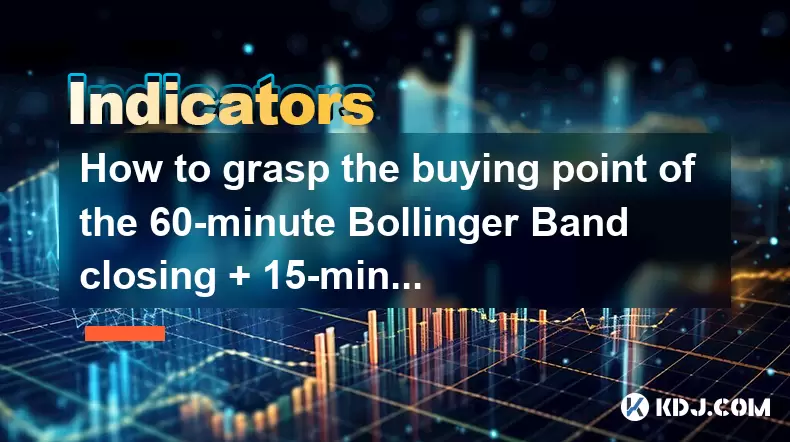
How to grasp the buying point of the 60-minute Bollinger Band closing + 15-minute MACD bottom divergence?
Jun 16,2025 at 12:03am
Understanding the Bollinger Band Closing Signal on a 60-Minute ChartThe Bollinger Band closing signal refers to a situation where the price closes outside the upper or lower band and then re-enters it in the subsequent candlestick. In this context, we focus on the lower Bollinger Band closing, which indicates a potential reversal from a downtrend. On th...
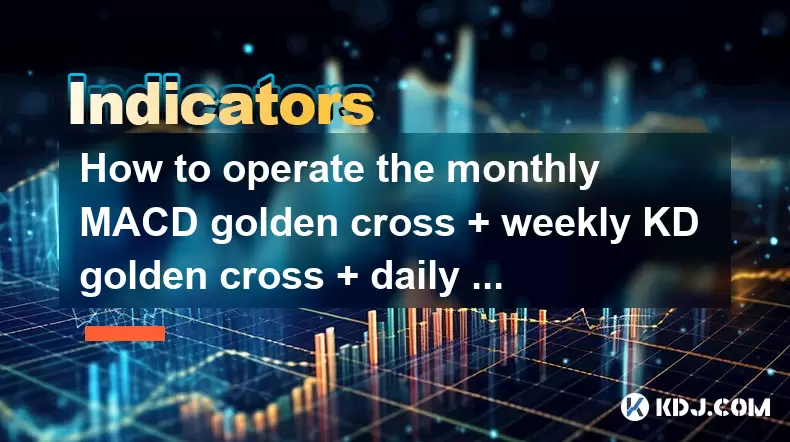
How to operate the monthly MACD golden cross + weekly KD golden cross + daily volume breakthrough?
Jun 15,2025 at 05:36am
Understanding the Strategy: Monthly MACD Golden CrossTo effectively operate the monthly MACD golden cross, traders must first understand what this signal entails. The MACD (Moving Average Convergence Divergence) golden cross occurs when the MACD line crosses above the signal line on a given chart timeframe. When this happens on the monthly chart, it sug...
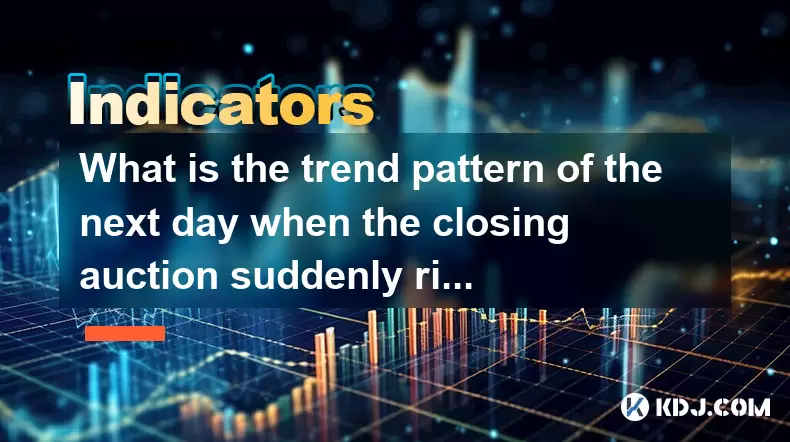
What is the trend pattern of the next day when the closing auction suddenly rises?
Jun 15,2025 at 08:15am
Understanding Closing Auctions in Cryptocurrency MarketsIn the context of cryptocurrency trading, a closing auction refers to a mechanism used by exchanges to determine the closing price of an asset at the end of a trading session. This process typically occurs within a short time window before the market closes for the day and aims to provide a fair an...

What does it mean when the volume fluctuates during the sideways trading at high levels?
Jun 15,2025 at 10:28am
Understanding Volume Fluctuations in Sideways TradingWhen volume fluctuates during sideways trading at high levels, it refers to the changes in the number of assets traded over a given period while the price remains relatively stable, moving within a defined range. This phenomenon typically occurs when the market lacks a clear directional bias—neither b...

What does the appearance of the double bottom pattern of the WR Williams indicator mean? Can I buy the bottom?
Jun 16,2025 at 01:01pm
Understanding the WR Williams IndicatorThe WR (Williams %R) is a momentum oscillator used in technical analysis to identify overbought and oversold levels in trading. Developed by Larry Williams, this indicator oscillates between 0 and -100. A reading above -20 typically indicates overbought conditions, while a reading below -80 signals oversold territo...

What does it mean when the trading volume is enlarged but the K-line body is very small?
Jun 16,2025 at 11:42am
Understanding the Basics of K-line and Trading VolumeIn cryptocurrency trading, K-line charts, also known as candlestick charts, are essential tools for analyzing price movements. Each K-line represents a specific time period and shows four key data points: open, high, low, and close. The body of the K-line reflects the difference between the opening an...

How to grasp the buying point of the 60-minute Bollinger Band closing + 15-minute MACD bottom divergence?
Jun 16,2025 at 12:03am
Understanding the Bollinger Band Closing Signal on a 60-Minute ChartThe Bollinger Band closing signal refers to a situation where the price closes outside the upper or lower band and then re-enters it in the subsequent candlestick. In this context, we focus on the lower Bollinger Band closing, which indicates a potential reversal from a downtrend. On th...

How to operate the monthly MACD golden cross + weekly KD golden cross + daily volume breakthrough?
Jun 15,2025 at 05:36am
Understanding the Strategy: Monthly MACD Golden CrossTo effectively operate the monthly MACD golden cross, traders must first understand what this signal entails. The MACD (Moving Average Convergence Divergence) golden cross occurs when the MACD line crosses above the signal line on a given chart timeframe. When this happens on the monthly chart, it sug...

What is the trend pattern of the next day when the closing auction suddenly rises?
Jun 15,2025 at 08:15am
Understanding Closing Auctions in Cryptocurrency MarketsIn the context of cryptocurrency trading, a closing auction refers to a mechanism used by exchanges to determine the closing price of an asset at the end of a trading session. This process typically occurs within a short time window before the market closes for the day and aims to provide a fair an...

What does it mean when the volume fluctuates during the sideways trading at high levels?
Jun 15,2025 at 10:28am
Understanding Volume Fluctuations in Sideways TradingWhen volume fluctuates during sideways trading at high levels, it refers to the changes in the number of assets traded over a given period while the price remains relatively stable, moving within a defined range. This phenomenon typically occurs when the market lacks a clear directional bias—neither b...
See all articles





















